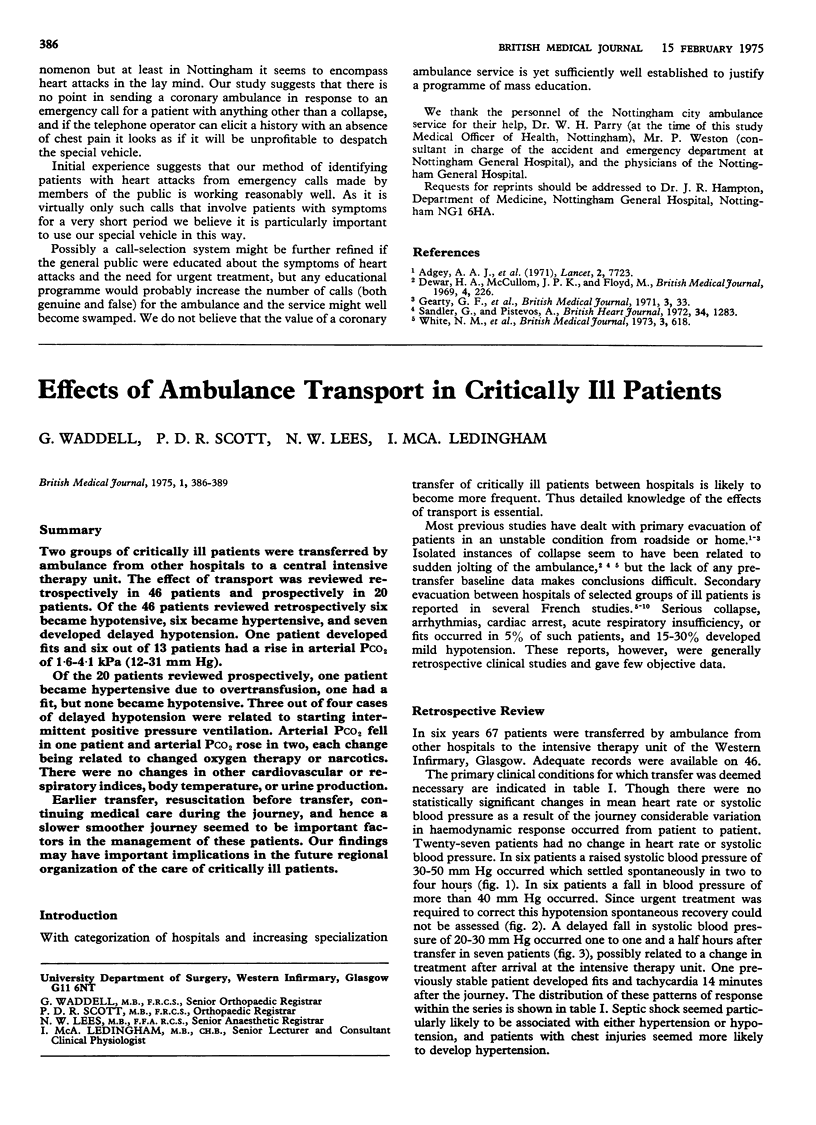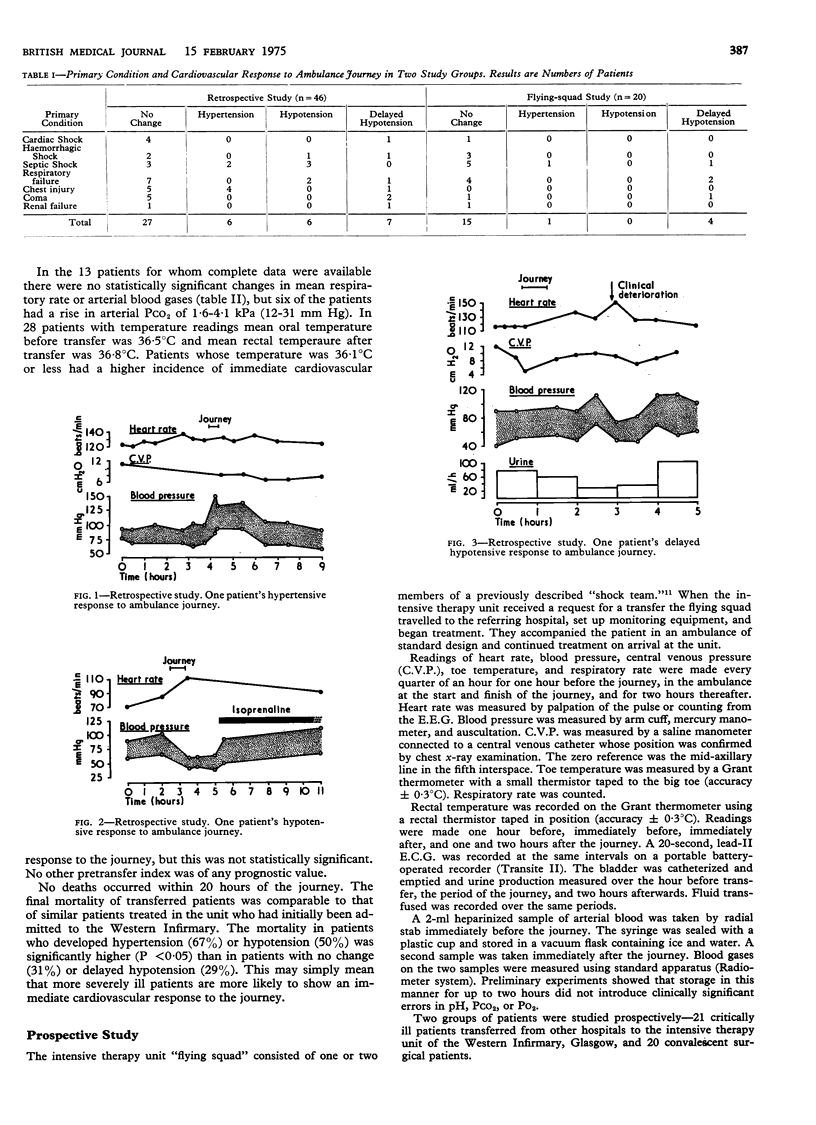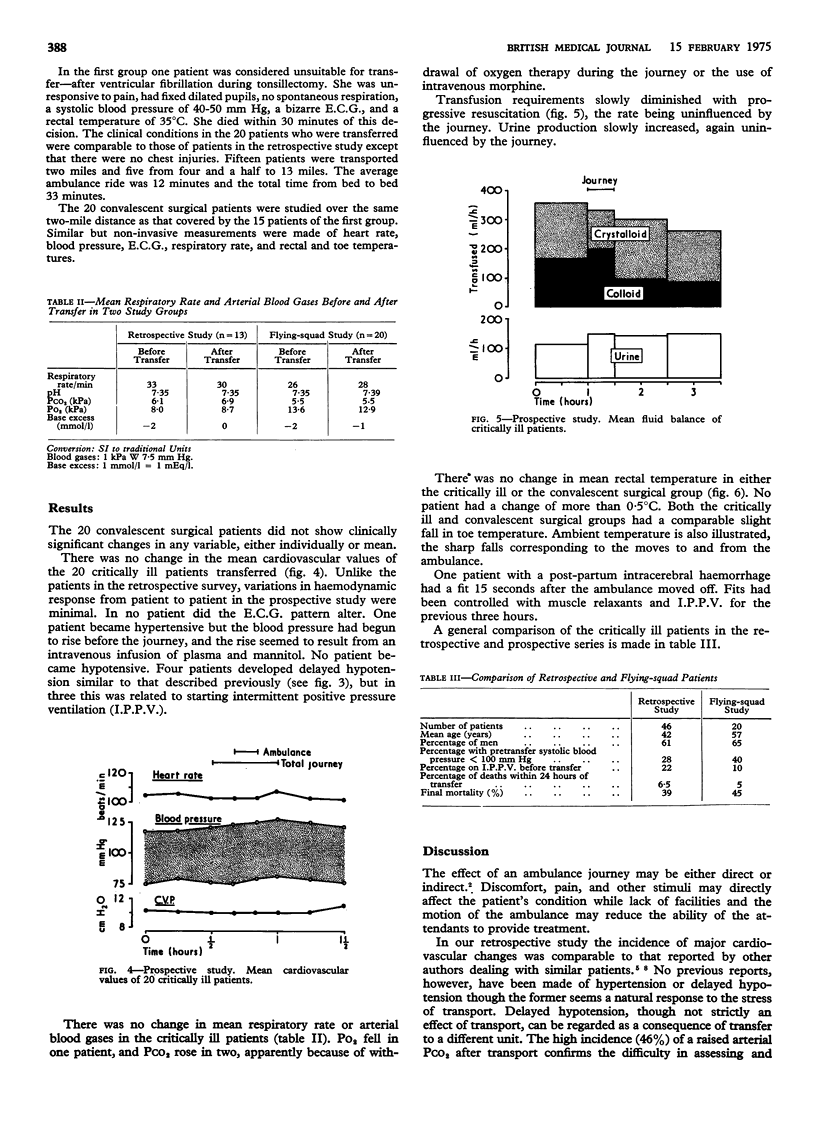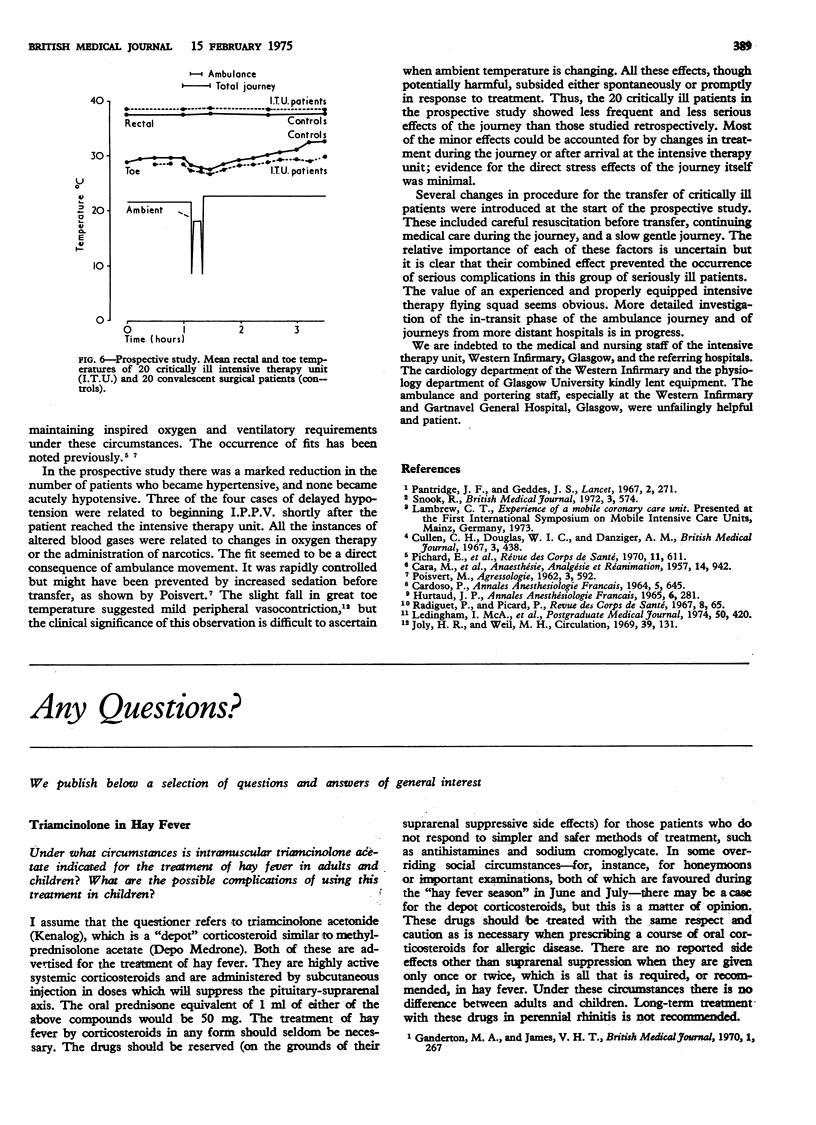Abstract
Two groups of critically ill patients were transferred by ambulance from other hospitals to a central intensive therapy unit. The effect of transport was reviewed retrospectively in 46 patients and prospectively in 20 patients. Of the 46 patients reviewed retrospectively six became hypotensive, six became hypertensive, and seven developed delayed hypotension. One patient developed fits and six out of 13 patients had a rise in arterial PCO-2 of 1-6-4-1 kPa (12-31 mm Hg). Of the 20 patients reviewed prospectively, one patient became hypertensive due to overtransfusion, one had a fit, but none became hypotensive. Three out of four cases of delayed hypotension were related to starting intermittent positive pressure ventilation. Arterial PCO-2 fell in one patient and arterial PCO-2 rose in two, each change being related to changed oxygen therapy or narcotics. There were no changes in other cardiovascular or respiratory indices, body temperature, or urine production. Earlier transfer, resuscitation before transfer, continuing medical care during the journey, and hence a slower smoother journey seemed to be important factors in the management of these patients. Our findings, may have important implications in the future regional organization of the care of critically ill patients.
Full text
PDF



Selected References
These references are in PubMed. This may not be the complete list of references from this article.
- Joly H. R., Weil M. H. Temperature of the great toe as an indication of the severity of shock. Circulation. 1969 Jan;39(1):131–138. doi: 10.1161/01.cir.39.1.131. [DOI] [PubMed] [Google Scholar]
- Ledingham I. M., Fisher W. D., McArdle C. S., Maddern M. The incidence of the shock syndrome in a general hospital. Postgrad Med J. 1974 Jul;50(585):420–424. doi: 10.1136/pgmj.50.585.420. [DOI] [PMC free article] [PubMed] [Google Scholar]
- Pantridge J. F., Geddes J. S. A mobile intensive-care unit in the management of myocardial infarction. Lancet. 1967 Aug 5;2(7510):271–273. doi: 10.1016/s0140-6736(67)90110-9. [DOI] [PubMed] [Google Scholar]
- Pichard E., Poisvert M., Hurtaud J. P., Ivanoff S., Cara M., Auffret R., Demange J., Fatras B., Seris H. Les accélérations et les vibrations dans la pathologie liée au transport sanitaire. Rev Corps Sante Armees Terre Mer Air. 1970 Oct;11(5):611–635. [PubMed] [Google Scholar]
- Radiguet de la Bastaie P., Picard P. Mise en condition et transport des comateux par la route. Rev Corps Sante Armees Terre Mer Air. 1967 Feb;8(1):65–74. [PubMed] [Google Scholar]
- Snook R. Medical aspects of ambulance design. Br Med J. 1972 Sep 2;3(5826):574–578. doi: 10.1136/bmj.3.5826.574. [DOI] [PMC free article] [PubMed] [Google Scholar]


